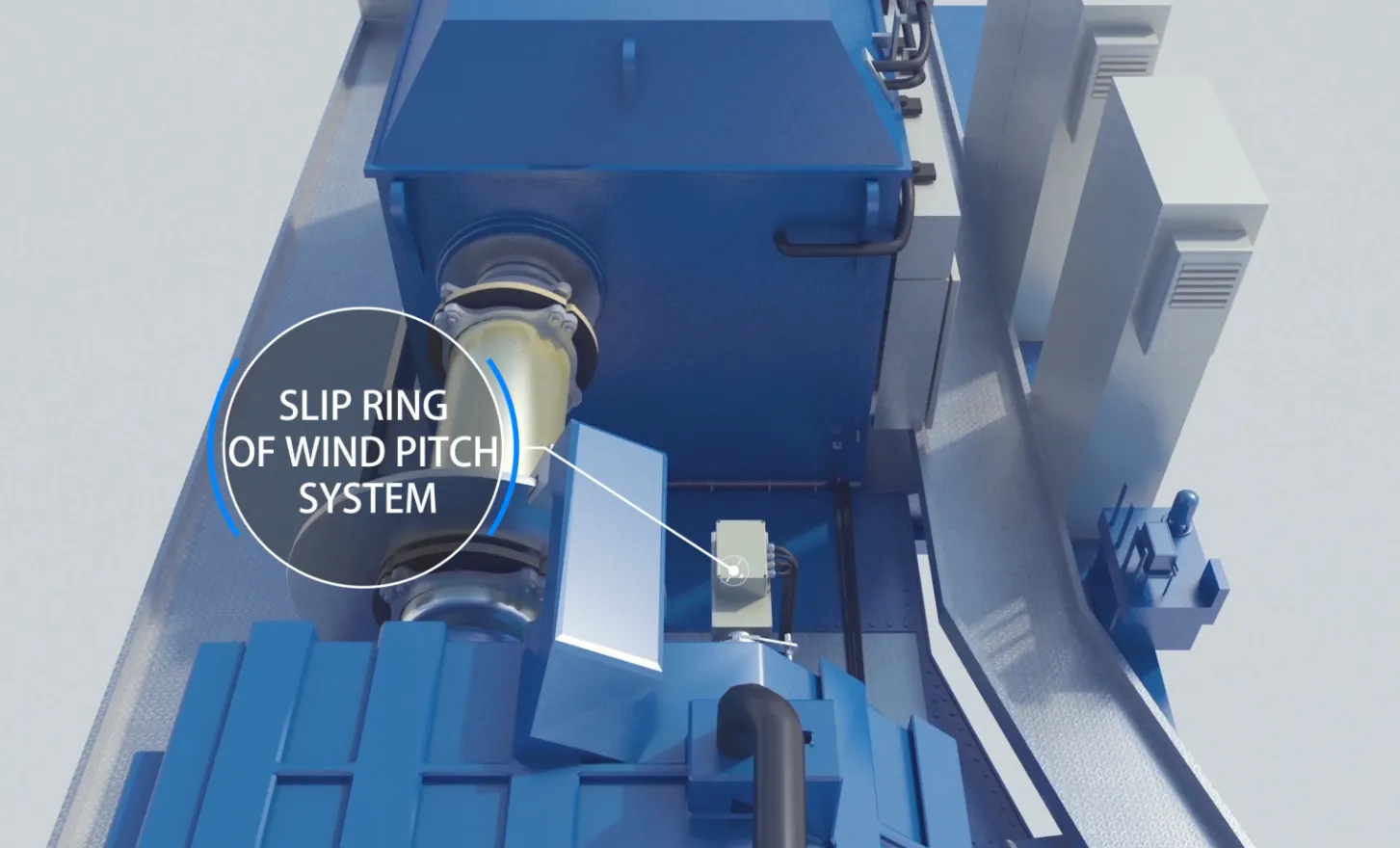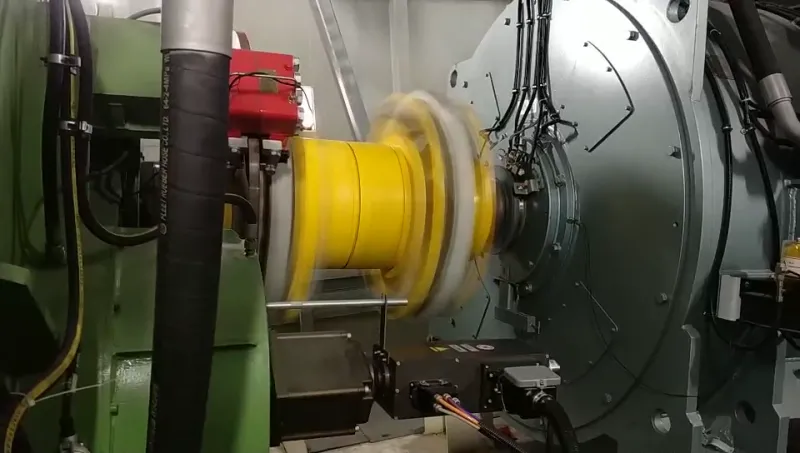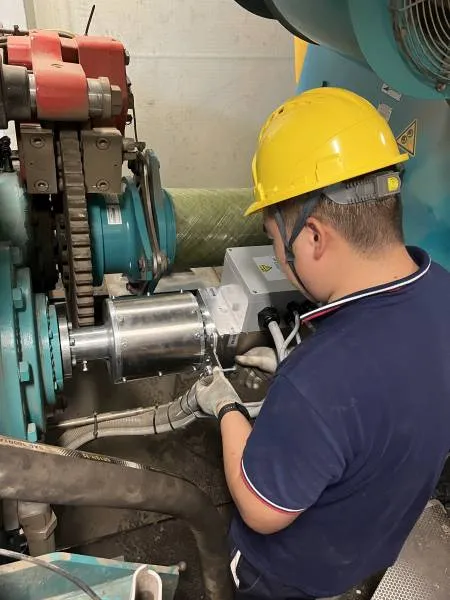Precautions for Assembling Wind Turbine Slip Rings
BY NBG
 2025-10-23
2025-10-23
VIEWS: 320

Precautions For Assembling Wind Turbine Slip Rings
Slip rings are not mere hardware, but precision-assembled electro-mechanical interfaces that maintain electric continuity in rotating systems. In wind turbines, they play a mission-critical role of transferring signals and power between the stationary nacelle and the rotating hub.


That is why assembly is not a side step but rather a part of engineering. This guide, grounded in real-world field service practices and technical input from NBG’s engineering support team, encompasses the comprehensive set of precautions necessary for a successful on-site wind turbine slip ring assembly.

Unpacking and Inspection:
Before any installation begins, proper inspection is essential. Slip ring units arrive as precision-engineered assemblies and should be handled with care. Missing or damaged components, even minor hardware, can compromise the whole system.
Checklist Before Mounting:
●The first step is to unpack the slip ring and verify the serial number against the shipment documentation.
●Try to inspect the main body, cables, connectors, sealing rings, and screw threads to determine if they are damaged and require your attention.
●Make sure that all torque wrenches (calibrated torque wrenches), How is an Allen wrench used? | HowStuffWorks, and gauges are available and checked with the certification dates. How is an Allen wrench used? | HowStuffWorks
It’s a good practice to put all materials and verify them against the provided Bill of Materials. If you find that anything is missing or even slightly damaged, pause the installation and contact the supplier for advice. A 15-minute check will help you in averting a 15-day shutdown.
Bottom Mounting Plate Installation
Installing the bottom mounting plate accurately is key to avoiding imbalances during rotation. Begin by placing the mounting plate into its designated nacelle base or shaft housing. When inserting the sealing washers between the bottom plate and the rotor shaft, it’s important to select them carefully. The right thickness and material ensure a solid, vibration-resistant connection that won’t shift under load. It’s not just about tightening things down, torque specs for slip ring mounting exist for a reason. Applying too much force can compress internal components or distort the contacts, while too little torque could lead to loosening during operation. It’s a small task, but one that sets the tone for a reliable installation.
Neglecting torque precision can lead to subtle misalignments that manifest later as high wear rates or noisy operation.
Slip Ring Placement on Rotor Shaft
Sliding the slip ring onto the rotor shaft may appear simple, but it must be done with great care to avoid misalignment or damage. Ensure the shaft surface is free from burrs and the keying or threading interface matches that of the slip ring base.
Here’s how to do it right:
●Use a soft-torque sleeve or a rubber mallet when placing the slip ring; never use a metal hammer.
●Make sure the slip ring and rotor shaft have matching thread interfaces.
●Confirm all locking pins are aligned before seating the unit.
Final Connection Checks and Rotation Test
After mechanical installation is complete, it’s time for electrical validation and operational testing. Check each electrical connector for proper seating, confirm that wires aren’t pinched or exposed, and ensure that brush assemblies have firm but not excessive contact with the rotor paths.
A slip ring rotation testing procedure should follow:
●Hand-rotate the slip ring and monitor for noise, resistance, or vibration.
●Run a fundamental continuity and insulation resistance test across all channels.
●Initiate controlled low-speed turbine rotation and log any deviations from expected resistance levels.
Also, verify that wind turbine electrical connector safety standards, including insulation and EMI shielding, are met before authorizing full-speed operation.
Electrical Connector Safety and Grounding Considerations
Once the mechanical fit and rotational checks are complete, it’s time to turn your attention to the electrical side of the assembly, often where real-world problems begin.
The quality of your electrical connections doesn’t just affect performance; it determines whether the system will hold up under real operational loads. Make sure terminals are fully seated, connectors are locked in, and all exposed areas are properly insulated. In high-speed turbines, even minor grounding issues can show up as intermittent signal loss or data corruption.
Don’t overlook grounding continuity between the slip ring housing and the main turbine chassis. Poor bonding in this area can increase EMI susceptibility, especially in environments with long cable runs or sensitive sensor arrays.
For teams maintenance in-field, developing a standard checklist for wind turbine electrical connector safety is one of the most practical ways to avoid service calls down the line. A 5-minute re-check here can save hours of troubleshooting later.
Service Support and On-Site Readiness
Even a well-designed installation can have problems in the real world. That is why NBG slip ring installation support is provided.
When it comes to operational teams, a live service log of maintenance intervals, rotational hours, temperature changes, and historical fault information is necessary. This helps predict problems in advance and minimize turbine downtime.
Conclusion
It is evident that a high-quality wind turbine slip ring assembly begins with a thorough detailing of unpacking, torqueing, sealing, and comprehensive testing. Every step guarantees the integrity of the system and its long-term performance, particularly in severe conditions where reliability is not an option; it is a requirement.
To sum up, the last thing to do on-site as a technician, engineer, or a procurement lead is to go through a quick checklist:
●All components unpacked and verified for damage
●Electrical continuity and rotation tests passed.
●Maintenance log created and support contacts verified.
By following this detailed slip ring installation guide and aligning with trusted OEM practices, you ensure that your wind system performs predictably across its lifecycle, with no surprises, just power and data, exactly where they should be.
Need help with installation, field retrofitting, or training for your O&M teams? Our technical support team is ready. Contact us today!








